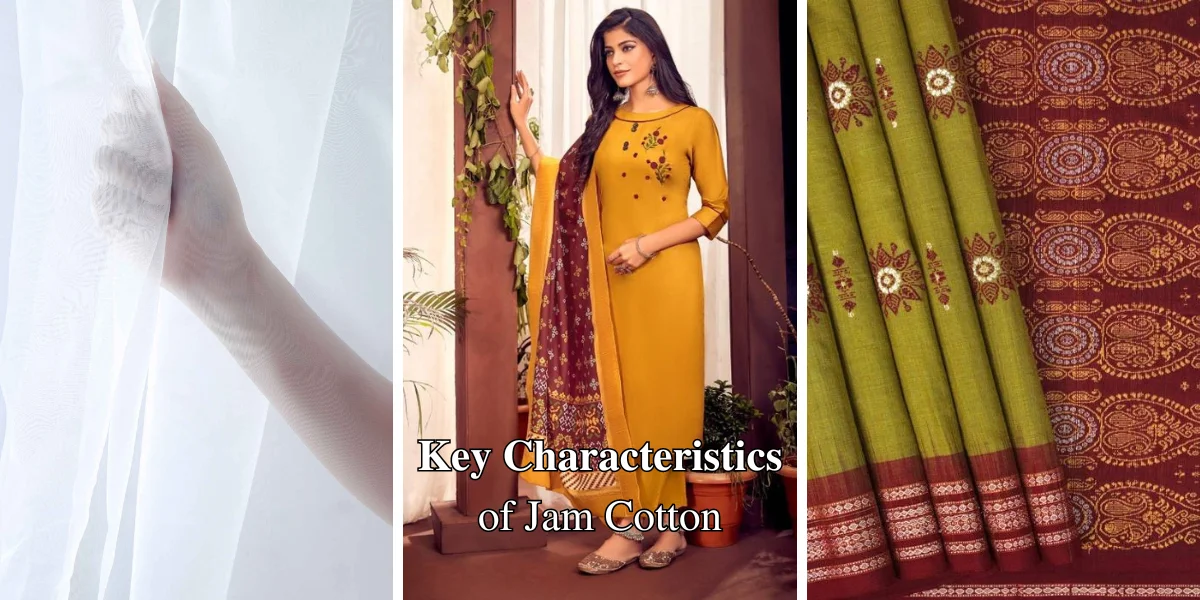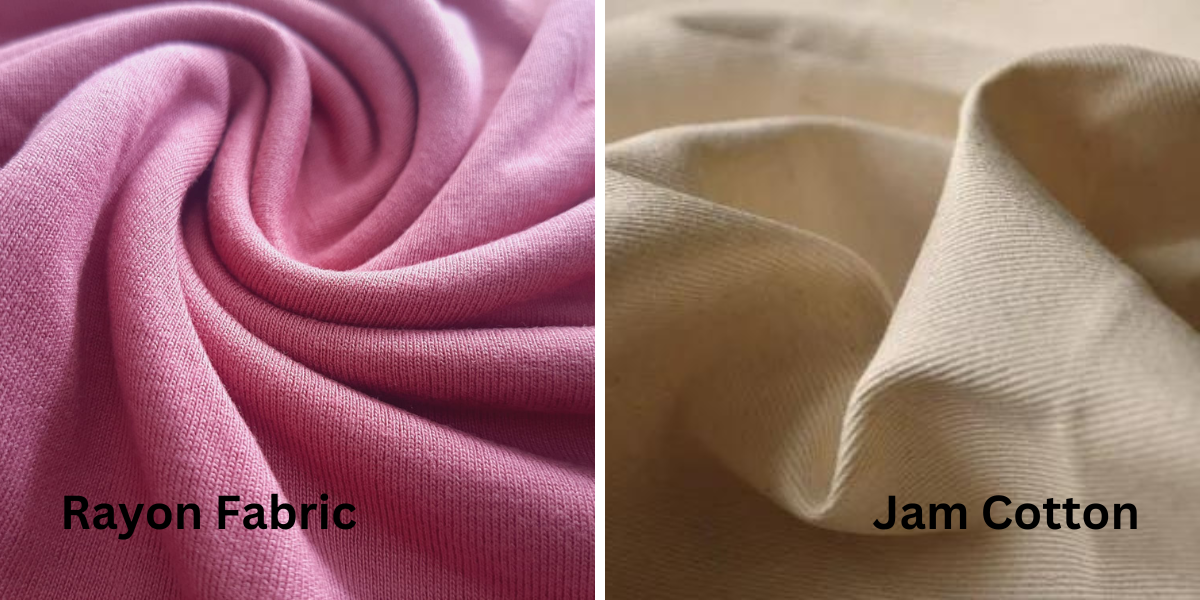Introduction to Rayon Fabric
Rayon is a versatile and widely used fabric that has gained an important place in the textile industry. It is a semi-synthetic fiber, meaning it is derived from natural sources but undergoes extensive processing to create the final material. This guide provides detailed information on the origin, production process, properties, use and care instructions of rayon fabric, providing a complete understanding of this remarkable textile.

Origins and History
Rayon was first developed in the late 19th century as a substitute for silk. The search for synthetic alternatives to expensive and rare natural silk led to the invention of rayon by French scientist Hilaire de Chardonnet, who is often referred to as the “Father of Rayon”. Initially known as “artificial silk”, rayon gained popularity for its silk-like properties at a fraction of the cost.
Production Process
The production of rayon involves several steps, starting with the extraction of cellulose from natural sources such as wood pulp or cotton linters. Here’s a breakdown of the key stages in the rayon manufacturing process:
- Cellulose extraction: Wood pulp or cotton linters are treated with chemicals to extract pure cellulose. This cellulose is then dissolved in a chemical solution to create a sticky fluid called viscose.
- Spinning: Viscous solution is put through a spinneret, a device with small holes, to make filament. These filaments are then solidified by passing them through an acidic bath, which turns the liquid viscose into a solid fiber.
- Drawing: The newly formed fibers are stretched to align the cellulose molecules, increasing the strength and elasticity of the fibers.
- Cutting and Finishing: The extracted fibers are cut to the desired length and treated to remove any residual chemicals. The fibers are then spun into yarn and made into woven or knitted fabric.

Properties of Rayon
Rayon fabric is known for its unique combination of properties that makes it suitable for a wide variety of applications. Some of its notable features include:
- Softness: Rayon is exceptionally soft and smooth, providing a comfortable feel on the skin.
- Drape: It features a fluid drape that mimics the luxurious flow of silk, making it ideal for dresses that require a graceful fall.
- Absorbency: Rayon is highly absorbent, making it suitable for use in fabrics that need to wick moisture away from the body.
- Breathability: The fabric allows air to circulate, keeping the wearer cool and comfortable in hot weather.
- Versatility: Rayon can be blended with other fibers to enhance its properties, making it a versatile choice for a variety of textile applications.
Uses of Rayon
The versatility of rayon makes it a popular choice for a wide range of products, including:
- Apparel: Rayon is commonly used in the production of dresses, blouses, skirts, and linings because of its softness and drape.
- Home Textiles: It is often used in bed linens, curtains and upholstery for its aesthetic appeal and comfort.
- Industrial Applications: Rayon is used in tire cords, medical supplies, and non-woven products because of its strength and absorbency.

Caring for Rayon Fabric
To maintain the quality and longevity of rayon apparel and textiles, it is essential to follow proper care instructions:
- Washing: Hand wash in cold water with mild detergent. If machine washing, use a gentle cycle and place the item in a mesh laundry bag.
- Drying: Lay flat to dry or hang to dry in a shady area. Avoid twisting or wringing the fabric, as this may cause damage.
- Ironing: Use a low heat setting on the iron, and iron while the fabric is slightly damp. Always iron on the reverse side to avoid shine marks.
- Storage: Store rayon clothing in a cool, dry place. Avoid prolonged exposure to direct sunlight, as it can weaken the fibres.
With its silk-like properties, versatility and comfort, rayon fabric has secured its place in both the fashion industry and everyday life. Understanding its origins, production process, and unique properties can help consumers make informed decisions about the use and care of this remarkable textile. Be it elegant dresses, comfortable bed linens, or practical industrial applications, rayon remains a valued and cherished fabric in a variety of fields.
Introduction to Jam Cotton
Jam cotton is a unique and versatile fabric that has gained popularity for its unique characteristics and wide range of applications. It is a blend of cotton and other fibres, which offers a perfect combination of comfort, durability and style. This fabric is known for its smooth texture, breathability, and ease of maintenance, making it a preferred choice for both casual and formal wear.

Composition and Production
The term “jam cotton” refers to a fabric that consists primarily of cotton but is blended with other fibers to enhance its properties. The blending process may involve natural fibers such as silk or synthetic fibers such as polyester, depending on the desired characteristics of the final product. The proportion of cotton in the blend is usually high, ensuring that the fabric retains the softness and breathability that cotton is known for.
The production of jam cotton involves several steps starting from the selection of high quality cotton fibres. These fibers are then spun into yarn, which is blended with other fibers. Blended yarn is woven or woven into fabric, followed by various finishing processes to enhance its appearance and performance.
Key Characteristics
- Softness and Comfort: Jam cotton retains the natural softness of cotton, making it comfortable to wear. The blending process can further enhance this softness, giving the skin a luxurious feel.
- Breathability: One of the most striking features of jam cotton is its breathability. The fabric allows air to circulate freely, keeping the wearer cool and comfortable even in hot weather.
- Durability: The inclusion of synthetic fibers can increase the durability of jam cotton. This makes it resistant to wear and tear, ensuring that clothes made from this fabric have a long lifespan.
- Ease of Maintenance: Jam cotton is easy to care for. It is machine washable and does not require special maintenance, making it a practical choice for everyday wear.
- Versatility: The versatility of the fabric allows it to be used in a wide range of clothing, from casual T-shirts and dresses to formal shirts and suits. Its adaptability also makes it suitable for different seasons and occasions.

Uses of Jam Cotton
Jam Cotton’s unique blend of properties makes it suitable for a variety of applications:
- Fabrics: Fabrics are widely used in the fashion industry to make different types of clothes. Its softness and breathability make it ideal for summer wear, while its durability ensures it can withstand regular use.
- Home Textiles: Jam cotton is also used in home textiles such as bed sheets, pillowcases and curtains. Its comfort and easy maintenance makes it a popular choice for household items.
- Accessories: The fabric is sometimes used in accessories such as scarves, handkerchiefs, and bags, providing a combination of style and functionality.
Caring for Jam Cotton
To maintain the quality and longevity of jam cotton clothing, it is essential to follow proper care instructions:
- Washing: Jam cotton can usually be machine washed in cold or lukewarm water. It is recommended to use a gentle cycle to avoid any damage to the fabric.
- Drying: Fabric can be air dried or tumble dried on a low heat setting. Avoid exposing it to high temperatures, as it may cause shrinkage or damage.
- Ironing: If necessary, jam cotton can be ironed on a medium heat setting. Using a steam iron can help remove wrinkles without damaging the fabric.
- Storage: Store Jam cotton clothes in a cool, dry place away from direct sunlight. This will help prevent the fabric from fading and maintain its integrity.
Jam cotton is a remarkable fabric that combines the best qualities of cotton with the advanced properties of other fibers. Its softness, breathability, durability and versatility make it the preferred choice for a wide range of applications. Be it clothing, home textiles or accessories, Jam Cotton offers a perfect blend of comfort and practicality. By following proper care instructions, you can ensure that your jam cotton items remain in excellent condition for years to come.
Difference Between Rayon Fabric and Jam Cotton

Composition and Origin
Rayon Fabric
- Origin: Rayon is a semi-synthetic fiber made from natural sources such as wood pulp, which is chemically processed to form cellulose fibers.
Composition: Rayon is made entirely of regenerated cellulose, making it a blend of natural and synthetic characteristics. The process involves dissolving cellulose in chemicals and then extruding it into fibers.
Jam Fabric
- Origin: Jam cotton is primarily a blend of natural cotton fibers blended with other natural or synthetic fibers such as silk or polyester.
- Composition: The high cotton content ensures that the fabric retains the softness and breathability of cotton, while the added fibers increase its durability and versatility.
Key Characteristics
Rayon Cotton
- Softness: Rayon is known for its smooth, silk-like texture, which provides a luxurious feel.
- Breathability: It has excellent breathability, making it suitable for hot climates.
- Absorbency: Rayon is highly absorbent, which can be beneficial for wicking moisture but also means it dries slowly.
- Draping: It drapes well, creating a flattering silhouette, ideal for dresses and flowing garments.
- Care: Rayon is sensitive to water and heat, requiring gentle handling and specific washing instructions to avoid shrinkage and damage.
Jam Cotton
- Softness: The high cotton content ensures a soft and comfortable feel, which is further enhanced by the blend of other fibers.
- Breathability: Jam cotton retains the breathability of pure cotton, making it comfortable for daily wear.
- Durability: The inclusion of synthetic fibers can increase its strength and resistance to wear and tear.
- Ease of Maintenance: Unlike rayon, jam cotton is easy to care for, it is often machine washable and less prone to shrinkage.
- Versatility: Its blend of fibers allows for a wide range of applications, from casual to formal wear, and even home textiles.
Uses and Applications
Rayon Fabric
- Fashion: Due to its smooth texture and excellent drape, rayon is popular for dresses, blouses, skirts and linings.
- Activewear: Its absorbent nature makes it suitable for activewear, although it may not be best for high intensity activities due to its slow drying speed.
- Home textile: Sometimes used in bedding and curtains, although care must be taken to ensure cleanliness.
Jam Cotton
- Clothing: Its comfort and durability make it ideal for a wide variety of clothing, from casual T-shirts and jeans to formal shirts and dresses.
- Home Textiles: This fabric is also used for bed linens, pillows and curtains due to its comfort and ease of care.
- Accessories: Jam cotton is so versatile that it can be used in scarves, handkerchiefs, and other accessories.
Rayon and jam cotton each offer different benefits and are suitable for different uses. Rayon, with its silky texture and excellent drape, is ideal for fashion-forward garments and accessories that require a luxurious touch. However, its care requirements and environmental impact can be drawbacks. Jam cotton, on the other hand, offers a versatile, durable and comfortable option that is suitable for a variety of applications, easier to maintain and usually with a more favorable environmental profile depending on the blend. Understanding these differences helps choose the right fabric for specific needs and preferences.
